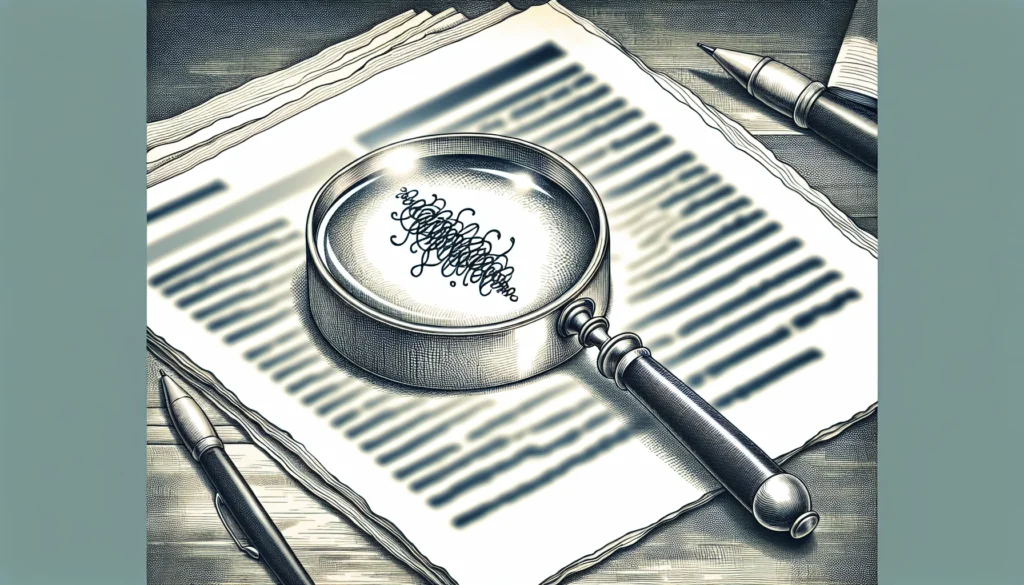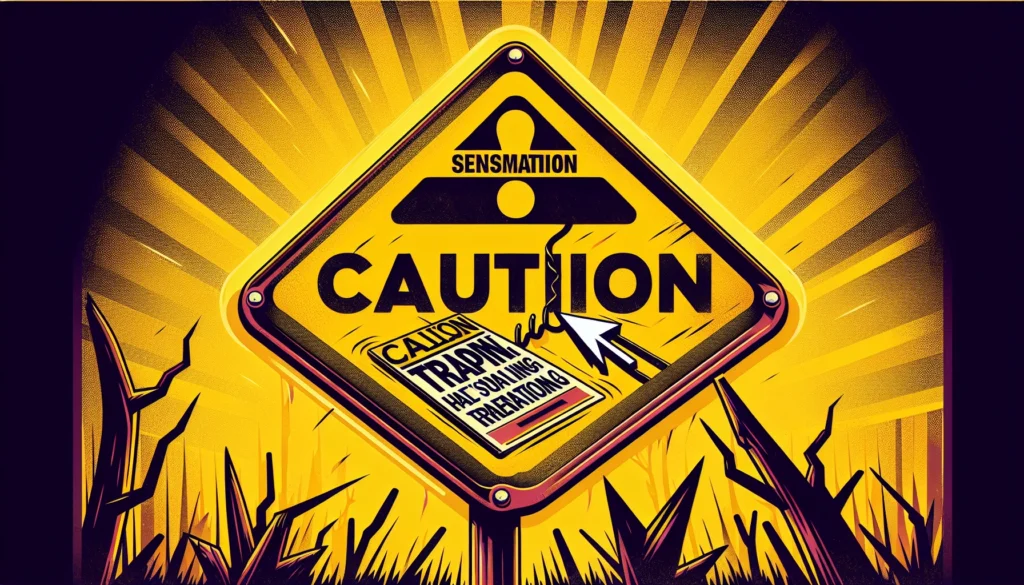Table of Contents[Hide][Show]
- Key Takeaways
- What is a Headline and its Purpose?
Top Ten Tips for How to Create Headlines+−
- Be Compelling and Captivating
- Understanding Your Target Audience
- Writing Headlines for Search Engines
- Use Numbers and Statistics
- Asking Intriguing Questions
- Leveraging Power Words
- Creating Urgency and Relevance
- Keeping It Short and Sweet
- Avoiding Clickbait and Misleading Titles
- Testing and Refining to Ensure Great Headlines
- Summary
Don’t let bad headlines bury your content and hinder its visibility and engagement. Learn “how to create headlines” that can turn the tide and boost your content’s reach. You need to write headlines that not only grab attention but also entice clicks. This article delivers ten concrete, actionable tips to help you craft headlines that attract and retain more readers using our strategic approach.
Key Takeaways
Writing headlines is truly balancing art and science, prioritizing captivating the reader’s attention to boost clicks and engagement.
Incorporate numbers and stats in headlines for better engagement, and use powerful words to evoke emotions and drive action.
Avoid clickbait at all costs. Instead, maintain honesty and transparency in your headlines. This approach builds trust and credibility with your audience and ensures long-term success for your original content.
What is a Headline and its Purpose?

The headline’s primary role is to captivate the reader’s attention, enticing them to click on your content, or perhaps it’s a compelling subject line designed to get them to open your email. In the marketing sphere, your headline marks the initial interaction with your potential reader, hence the importance of nailing it. A headline that aligns with your most important business goals while considering secondary purposes can significantly improve its effectiveness.
A headline’s purpose transcends mere attention-grabbing. It sets the piece’s tone, offering readers a sneak peek of what lies ahead. A well-crafted headline can distinguish between a visitor scrolling beyond your article and engaging with it. It’s about engaging the reader’s curiosity and delivering value right from the first glance.
Headlines promise the reader value, making them willing to invest their time. In a world where the average person sees over 10,000 Ads daily but clicks on only a tiny fraction, your headline must stand out. It’s not just about being catchy; it’s about delivering on that promise and enticing readers to delve deeper into your content. To achieve this, consider exploring various headline ideas to find the perfect fit for your content.
In marketing, every piece of content has a specific purpose, whether it’s boosting brand visibility, improving SEO, or getting clicks. The ultimate goal of someone searching for content on improving headlines is likely to increase the clicks and engagement their content receives. This blog post will provide you with practical, actionable tips to achieve just that.
Top Ten Tips for How to Create Headlines
What do we have in store for you? We’ll delve into the art of creating engaging headlines, understanding your target audience, optimizing for search engines, among other things. By the close, you’ll be armed with the knowledge and tools needed to create headlines that not only attract but also retain readers. Without further ado, here are our ten proven strategies for crafting headlines that attract a larger readership.
Be Compelling and Captivating

A captivating headline is your key to seizing the reader’s attention and directing traffic to your content. As the saying goes, people share headlines, not stories, implying that your headline has a significant bearing on the reader’s decision to engage with your content. Imagine this: 80 percent of people will read your headline, but only 20 percent will read beyond it. That’s the power of a good headline.
The headline is read five times more than the body copy, making it the first point of interaction with your reader. It’s your opportunity to draw them in and make them want to read more. That’s why some bloggers suggest spending an equal amount of time crafting your headline as you do writing the main content.
A good headline must:
Attract interest
Give potential readers a sense of the article
Demonstrate the brand voice
Be accurate and concise.
Writing headlines that revolves around your primary business objective, while keeping secondary goals in mind, can boost its effectiveness. Here are some tips to make your headline more compelling:
Use active verbs
Use concise language
Use a blend of familiar and unexpected words
Make it unique
Make it ultra-specific
Convey a sense of urgency
Provide something useful
Following these tips can help you write great headlines and enhance your headline’s impact.
Even if the rest of the content is top-notch, a well-crafted headline can have a substantial influence on a blog post’s success. It positively affects the brand’s reputation by building trust and admiration with readers. Adding a year to your headlines can make them timely and relevant, increasing their appeal. Blogging statistics change frequently so its important to stay up to date with what is working currently.
Understanding Your Target Audience
Recognizing your target audience forms the basis for developing effective headlines. Knowing who you’re writing for helps tailor your headlines to their needs, interests, and emotions, making your content more relatable and engaging. This involves considering demographics such as age, income level, and education to ensure your headlines resonate with your audience.
Catering headlines to a specific audience ensures alignment with cultural touchpoints and preferences based on geography, demographics, and interest areas. For example, a headline that appeals to a specific gender can be more effective, such as writing from a female perspective for a clothing business targeting women. Likewise, crafting headlines that address the interests and problems of your audience provides clear reasons for them to continue reading.
Using humor in headlines can make your content more appealing if it aligns with your brand’s voice and your target audience’s preferences. It’s about striking the right balance between being engaging and staying true to your brand. By understanding your audience, you can create headlines that not only attract readers but also keep them engaged.
Remember, writing headlines is more than just a string of words; it’s a promise to your reader. Make sure that promise aligns with what your audience is looking for and you’ll have a winning formula for writing headlines. To write a headline that stands out, utilizing proven headline formulas can further enhance your chances of creating attention-grabbing titles.
Writing Headlines for Search Engines

Creating headlines for search engines requires a fine balance. On one hand, you want your headlines to be user-friendly and engaging; on the other, you need them to be optimized for SEO to gain visibility in search engine results pages (SERPs). Using relevant keywords in your headlines helps search engines understand your content and aids searchers in identifying solutions to their problems.
However, it’s crucial to avoid keyword stuffing, as it can be detrimental to the user experience and may even result in penalties from search engines. Instead, incorporate keywords naturally into your headlines and metadata to maintain readability and effectiveness. This balance ensures that your headlines capture both the reader’s attention and search visibility.
Remember, when optimizing your blog post for search engines, keep the following in mind:
Your H1 headline and meta title don’t necessarily have to be the same, but consistency is key.
Including target keywords in the URL structure helps with SEO and should match the page titles.
By optimizing your headlines for search engines, you improve your chances of attracting more clicks and driving more traffic to your blog post.
- Optimizing your headlines can also drive more SEO backlink value if people leverage your title as anchor text.
Use Numbers and Statistics

Numbers and statistics in headlines act like ‘brain candy’— they have a psychological appeal that can substantially enhance engagement and shareability. Using specific numbers and data in your headlines sets clear expectations about the amount of content, improves scan-ability, and makes your headlines stand out visually. For example, headlines with odd numbers have been shown to increase click-through rates by 20 percent.
Odd numbers are perceived as more believable and help in better information recall. Here are some ways to incorporate numbers into your headlines:
Replace the word ‘seven’ with the numeral ‘7’ in headlines.
Use numbers and statistics to make your headlines more engaging.
Provide a clear, quantifiable promise to your readers.
By following these tips, you can make your content more attractive and appealing to readers.
Incorporating numbers into your headlines is one of the most effective strategies for improving their appeal. Whether it’s “10 Tips for Writing Great Headlines” or “7 Proven Strategies to Boost Engagement,” numbers can make a significant difference in how your content is perceived and shared.
Asking Intriguing Questions
Incorporating questions into headlines can be a potent tool to ignite curiosity and motivate readers to seek answers. Leveraging a psychological effect, question headlines cause the reader’s mind to take the next step: answer the question or wonder about the answer. This technique aids semantic SEO by helping Google understand how the article is useful.
Questions in headlines invite readers to think about something, creating an incentive for them to find the answer. For instance, “Are You Making These Common Headline Mistakes?” not only piques interest but also compels the reader to click and learn more. However, questions in headlines should be ones that readers are asking themselves, ensuring relevance and effectiveness.
Keeping a little mystery in your headlines can also pique readers’ curiosity and encourage them to read more. Just ensure that the question posed is answered within the content to maintain trust and effectiveness. By asking intriguing questions, you can make your headlines more engaging and drive higher click-through rates.
Leveraging Power Words
Power words, persuasive terms that elicit a psychological or emotional response, are incredibly efficient at capturing attention and driving action. Using power words in your headlines can significantly increase conversion rates, with some marketers reporting up to a 12.7% boost.
Here are some examples of power words:
Captivating
Exclusive
Proven
Unleash
Discover
Ultimate
Revolutionary
The words are designed to evoke enthusiasm and encourage readers to engage. They aim to stimulate action and provoke a response.
There are various categories of power words, including those that trigger emotions like fear, trust, anger, and curiosity. Effective power words for headlines include:
‘exclusive’
‘revealed’
‘ultimate’
‘best’
These words promise value and evoke curiosity. For example, “Discover the Ultimate Guide to Writing Great Headlines” uses power words to make the content more compelling.
Emotionally impactful words can be used to increase conversion rates for:
Emails
Blog posts
Copy
Advertisements
By appealing to customers’ emotions, positive and happy emotional headlines tend to drive more shares and engagement. By focusing on the details, weaving in numbers, and using powerful adjectives, you can make your headlines super-attractive to your audience’s needs.
Power words can be used effectively in various contexts, such as:
website content
email campaigns
social media posts
advertisements
By leveraging these words, you can create headlines that not only attract but also engage and convert readers into fans of your powerful headlines and catchy headlines.
Creating Urgency and Relevance
Incorporating a sense of urgency into your headlines encourages prompt action and aids in enhancing conversion rates. By conveying urgency, you stir emotions and make your audience more likely to take decisive steps. For instance, headlines like:
“Limited Time Only”
“Offer Expires Tomorrow”
“Act Now”
“Don’t Miss Out”
effectively build a sense of urgency.
Using time-sensitive language in headlines, such as “Last Chance” or “Exclusive Offer Ends Soon,” can push readers to act quickly. Power words for creating urgency and scarcity include ‘limited-time,’ ‘last chance,’ and ‘exclusive,’ which compel the reader to take action. Addressing a pain point or need is also important in a headline to capture the reader’s attention by speaking to a problem or question they might have.
By presenting your content as a solution to a time-sensitive dilemma or recurring problem readers experience, you can make your headlines more relevant and effective. For example, “How to Fix Common SEO Mistakes Before It’s Too Late” addresses a pain point and creates urgency, making it more likely to attract clicks.
Creating urgency and relevance in your headlines not only captures attention but also drives higher engagement and conversions. By tapping into your readers’ emotions and needs, you can make your headlines more compelling and effective.
Keeping It Short and Sweet
Regarding headlines, conciseness is your greatest ally. The ideal headline length is around 55 characters and approximately 6 words. Shorter headlines perform best because they cater to the average reader’s short attention span and fit nicely in search engine results and social media feeds.
Concise headlines allow readers to quickly grasp the basic premise of your content. By clearly expressing the content and its benefit in a few short words, you reduce barriers to engagement and make it easier for readers to decide to click. Avoid using confusing headlines or complex language to ensure your headlines are easily understandable.
While shorter headlines are generally more effective, longer headlines can still work if they remain succinct and clear. The key is to avoid being wordy or vague. For example, a headline like “10 Tips for Writing Great Headlines That Attract Readers” is both informative and engaging without being overly long.
By keeping your headlines short and sweet, you can effectively capture reader’s attention and encourage them to read more. Remember, simplicity and clarity are your allies in crafting compelling headlines. Analyzing a few headlines can help you understand what works best for your target audience.
Avoiding Clickbait and Misleading Titles

Clickbait and deceptive titles might attract clicks, but they have the potential to severely tarnish your brand’s reputation and undermine audience trust. Misleading headlines can lead to high bounce rates as users leave your site immediately upon realizing the content does not meet their expectations. This not only disappoints users but also negatively impacts your SEO and credibility.
It’s essential to ensure that your headlines are accurate both in fact and sentiment. Your headlines should be representative of the content they are paired with to avoid misleading readers. Sensationalist clickbait headlines are losing their effectiveness due to oversaturation and declining audience interest.
By maintaining honesty and transparency in your headlines, you build trust and credibility with your audience. A good headline should:
Entice readers without resorting to misleading tactics
Foster loyalty
Ensure a better user experience
Lead to long-term success
Testing and Refining to Ensure Great Headlines
Evaluating and enhancing your headlines is critical to gauge their success and enhance their effectiveness. By regularly A/B testing headlines, you can gain insights into which approaches, phrases, and tactics resonate best with your audience. This helps you stay on top of creating impactful content for your audience. Data from existing content can provide valuable insights into what makes a good headline, such as word count, keywords, and conversion rates.
To perform A/B testing, follow these steps:
Create two versions of your headline (version A and version B).
Track metrics like click-through rate and time on page to compare the performance of the two versions.
Use tools like Ninetailed to show different headline versions to visitors randomly.
Analyze conversion rates to evaluate the effectiveness of your headlines. Conversion rates measure how many people who saw the headline took the desired action.
By continuously testing and refining your headlines, you can optimize them for better performance and higher engagement. This iterative process ensures that your headlines remain effective and compelling over time.
Summary
Creating compelling headlines is an art that requires understanding your audience, leveraging power words, and optimizing for search engines. From using numbers and asking intriguing questions to maintaining honesty and avoiding clickbait, each tip plays a crucial role in crafting headlines that attract and engage readers. Remember, a headline is more than just a title—it’s a promise to your reader.
By applying these 10 proven tips, you can transform your headlines from ordinary to extraordinary, driving more traffic and engagement to your content. So go ahead, experiment, test, and refine your headlines to see what works best for your audience. Happy headline writing!
Frequently Asked Questions
Why are great headlines so important in content marketing?
Headlines are crucial in content marketing because they are the first thing readers notice and greatly impact their decision to interact with the content. A compelling headline can grab attention, increase traffic, and encourage clicks and shares.
How can I ensure my headlines are SEO-friendly?
Make sure to include relevant keywords naturally in your headlines, without overloading them, and keep your H1 headline and meta title consistent. Also, don’t forget to include target keywords in the URL structure for SEO-friendly headlines.
What are power words, and why are they effective?
Power words are persuasive terms that trigger psychological or emotional responses, making them highly effective in grabbing attention and driving action, ultimately increasing conversion rates and making your content more engaging.
How can I avoid clickbait and misleading titles?
To avoid clickbait and misleading titles, make sure your headlines are accurate in both fact and sentiment to build trust with your audience. Misleading titles can damage your brand’s reputation and lead to high bounce rates.
What is the best way to test and refine my headlines?
The best way to test and refine your headlines is by regularly A/B testing them. Create two versions of your headline and compare their performance using metrics like click-through rate and time on page. Tools like Ninetailed can help set up these tests.

 Mastering Google E-E-A-T: What It Is & How It Boosts Your SEO Performance
Mastering Google E-E-A-T: What It Is & How It Boosts Your SEO Performance